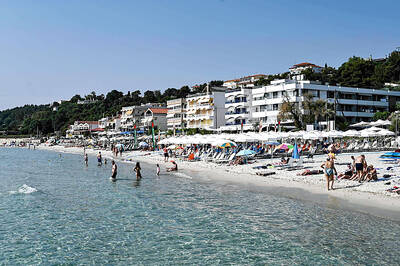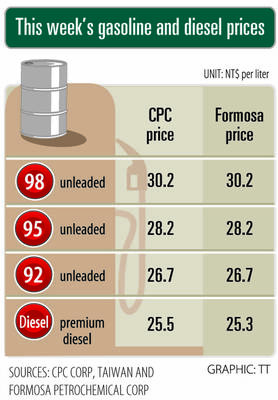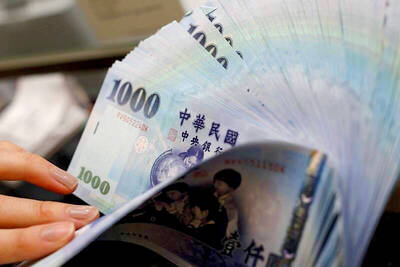RAC Electric Vehicles Inc (華德動能), which makes electric buses and trucks, yesterday said that its domestic shipments of electric buses would more than double next year on the back of a government policy to increase the adoption of electric vehicles.
The government aims to raise the nation’s number of electric buses to 10,000 units over the next 10 years, starting with 430 units next year, RAC said.
RAC aims to acquire one-fourth of the market next year by selling about 108 buses, up from 53 buses this year, chairman and chief executive Alex Tsai (蔡易忠) told investors yesterday.
This year, RAC holds 90 percent of the market, Tsai said, adding that the declining market share expected next year is due to capacity constraints.
RAC can build between 80 and 90 buses a year, and plans to expand capacity in the second or third quarter next year to produce between 400 and 500 units per year, Tsai said.
In the first half of this year, RAC sold 31 buses and posted revenue of NT$228.05 million (US$7.28 million), according to a filing with the Taiwan Stock Exchange.
RAC swung into the black in the first six months of this year with profit of NT$13.02 million, or NT$0.65 per share, the filing said.
Tsai said the break-even point for the company is selling 60 buses a year.
Last year, RAC reported revenue of NT$57.83 million against losses of NT$60.53 million, or NT$4.73 per share, the filing said.
There are 35 large electric buses and 45 medium-sized electric buses in use in Taiwan, with RAC accounting for 58 percent of the market, Tsai said, adding that nine commuter buses for Taiwan Semiconductor Manufacturing Co (TSMC, 台積電), the world’s top contract chipmaker, in the Hsinchu Science Park (新竹科學園區) were manufactured by the firm.
The company also plans to sell buses overseas soon, Tsai said.
RAC sells large buses for about NT$5.2 million each and medium-sized coaches for NT$3.15 million, it said, adding that 60 percent of the units are manufactured locally.
Recharging for between five and seven hours, large buses can cover up to 350km, while medium-sized buses average about 280km, Tsai said.
The company is set to debut on the Emerging Stock Market on Tuesday, with an initial public offering price of NT$60.
The Emerging Stock Market is a preparatory board for the nation’s two main bourses: the Taiwan Stock Exchange and the GRETAI Securities Market. Trading on the smaller board is restricted to securities firms, by means of negotiation, making initial public offerings not open to public subscription.
RAC said it plans to apply to shift its listing to the main board in the second quarter of 2016.
Tsai owns 28.9 percent of the company’s shares, while autoparts maker Mobiletron Electronics Co (車王電子) owns 14.9 percent, the company said.

Merida Industry Co (美利達) has seen signs of recovery in the US and European markets this year, as customers are gradually depleting their inventories, the bicycle maker told shareholders yesterday. Given robust growth in new orders at its Taiwanese factory, coupled with its subsidiaries’ improving performance, Merida said it remains confident about the bicycle market’s prospects and expects steady growth in its core business this year. CAUTION ON CHINA However, the company must handle the Chinese market with great caution, as sales of road bikes there have declined significantly, affecting its revenue and profitability, Merida said in a statement, adding that it would

Greek tourism student Katerina quit within a month of starting work at a five-star hotel in Halkidiki, one of the country’s top destinations, because she said conditions were so dire. Beyond the bad pay, the 22-year-old said that her working and living conditions were “miserable and unacceptable.” Millions holiday in Greece every year, but its vital tourism industry is finding it harder and harder to recruit Greeks to look after them. “I was asked to work in any department of the hotel where there was a need, from service to cleaning,” said Katerina, a tourism and marketing student, who would

i Gasoline and diesel prices at fuel stations are this week to rise NT$0.1 per liter, as tensions in the Middle East pushed crude oil prices higher last week, CPC Corp, Taiwan (台灣中油) and Formosa Petrochemical Corp (台塑石化) said yesterday. International crude oil prices last week rose for the third consecutive week due to an escalating conflict between Israel and Iran, as the market is concerned that the situation in the Middle East might affect crude oil supply, CPC and Formosa said in separate statements. Front-month Brent crude oil futures — the international oil benchmark — rose 3.75 percent to settle at US$77.01

RISING: Strong exports, and life insurance companies’ efforts to manage currency risks indicates the NT dollar would eventually pass the 29 level, an expert said The New Taiwan dollar yesterday rallied to its strongest in three years amid inflows to the nation’s stock market and broad-based weakness in the US dollar. Exporter sales of the US currency and a repatriation of funds from local asset managers also played a role, said two traders, who asked not to be identified as they were not authorized to speak publicly. State-owned banks were seen buying the greenback yesterday, but only at a moderate scale, the traders said. The local currency gained 0.77 percent, outperforming almost all of its Asian peers, to close at NT$29.165 per US dollar in Taipei trading yesterday. The